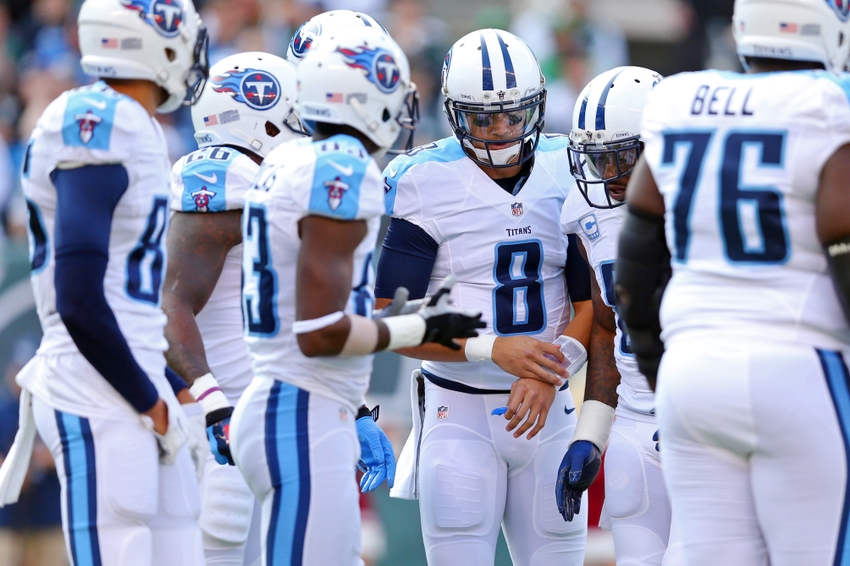Every fantasy season the age old debate resurfaces, to handcuff or not to handcuff. Injuries are guaranteed, knowing who to draft as an insurance policy or to pick up off waivers is a critical component in your journey to fantasy football glory. Luckily for you, I will be here to guide you throughout the season on which handcuffs you should own or which to keep on your watch list. Unfortunately our leagues bench spots are not infinite, some handcuffs need to be drafted and some left on the waivers.
Please, blog, may I have some more?

Chris Ivory
The fantasy gods are testing our skills as we enter the semifinal rounds of the fantasy football playoffs. Do not fret, I am here to help you weather any storm.
Besides just providing you with important handcuff news and player updates, I have another nugget for you as our battle for glory nears. Defense Wins Championships!
Most of fantasy football is focused on offense, but do not forget about defense. I am not talking about the roster spot on your fantasy team but defensive strategy to help you win your league. Exhibit-A: I have a championship matchup this weekend and my opponent has Carson Wentz as his only rostered QB. I added every viable starting QB from the waiver wire before he could make a move. Now all available spot-start QBs are on waivers again until after our game this weekend, leaving him to choose between Jeff Driskel and Josh Rosen. Due to roster limits, I had to leave someone out there! Some might have a few choice words for me regarding my cutthroat strategy, but this is the type of tenacity it takes to win a championship. Have you heard of “hack-a-Shaq” in the NBA? It might not be pretty, your fans might not find it thrilling, but we do it for the WINS.
As the number of teams making waiver claims reduces each playoff round, you have a better opportunity to block your opponents. Do you see a weak spot at RB or WR? Is there is a starting caliber player with upside on the waiver wire? See if you can add him on your roster to avoid your competitior-in-need from picking them up. It is important to pay attention to handcuff and injury reports this time of year, even if you do not own the player at risk. Maybe you can block your counterpart from picking up their replacement, if you consume the news before them.
Now, let us get to the Bad Boyz of week 15. Enjoy!
Please, blog, may I have some more?Welcome! Welcome! To an elite club, an exclusive group, of individuals whose fantasy football skills reign supreme over their peers. Now is the time to showcase your prowess and claim your seat on the pigskin throne. Let us put fear in the eyes of our enemies as we encounter our first foe in our championship quest.
Today I cover my take on the multiple running back handcuffs that will see starting duties this weekend. Unfortunately, as we enter the first round of the playoffs, we are down a few heavy hitters, that have carried us to this point. James Conner, Kareem Hunt, Melvin Gordon, and Matt Breida are a few of the studs that will be missed. If you have followed along all season then you have built your bench depth adequately to compete for a championship. Hopefully, some of these players below can come to our rescue.
Please, blog, may I have some more?As we mark the halfway point of the NFL season, many fantasy football outlets are performing mid-year reviews. While reflecting on early season analysis can be beneficial, I know you are more concerned about who to start this week for your starter that is on bye and what is going on with the multiple backfield injuries. This is what I am here to give you…
Please, blog, may I have some more?See what I did there for you Red Sox fans?
Enough baseball. Back to the NFL where my Buffalo Bills put on a truly deplorable performance on all sides of the football. The worst part might be that it wasn’t the worst performance of the week (Looking at you Arizona Cardinals).
Please, blog, may I have some more?Last year I made a Colin Kaepernick prediction pick in my waiver wired column (check it out!) and obviously you saw how that ended up. Well this year there are two teams who are desperate for good QB play are the Bills (who just really started Derek Anderson in a game) and the Jaguars who could be a playoff favorite if it weren’t for Blake Bortles. If Kaepernick still isn’t in the NFL, then may I present exhibit A in the NFL vs. Colin Kaepernick your honor. Kaep is still only 30 years old and is probably the healthiest QB on the planet right now. So what do you think? Are you crazy enough to add Kaepernick?
Please, blog, may I have some more?Would you believe me if I told you that bye weeks are a positive thing in Fantasy Football? Yes, managing our waiver acquisitions and benches while we fill in for our players on bye can be a headache but there is a silver lining here (I’m on a roll with these movie references).
I have no clue who @pahowdy is but he just got a plug in my weekly handcuff report, good for him. The only thing I would add to this tweet is it applies just as much to season long leagues.
While your opposing owners are desperately trying to cover players on bye, valuable fantasy assets are popping on waivers for us savvy owners to scoop up. Let me know if you’ve heard this one before….one man’s trash in another man’s treasure. Well, this is your opportunity to pick up that trash.
Remember when you, Melvin Gordon and Alex Collins owners, missed out on Austin Ekeler and Javorius Allen because they were the hottest waiver add week 1-2. Well, in a number of my leagues I’ve noticed these early season waiver adds are starting to get dumped as owners scramble to fill in their byes. Comb through your leagues transaction history after each waiver period moving forward to see if you can find any treasure. Your goal is to build for your playoff run and ultimately your championship. Savvy moves like this can push you over the top. The probability of starters getting injured only increases as the season wears on and player usage piles up.
Now on to this weeks’ Bad Boyz report…
Please, blog, may I have some more?What is more surprising, that Corey Clement scored three touchdowns or that Corey Clement scored three touchdowns and wasn’t even the top scoring running back in Week 9? Yeah, I guess the first one, but the second part is pretty interesting too. Alvin Kamara scored two touchdowns of his own and added six catches and over 150 yards from scrimmage to eek out the top running back spot for the week.
Kamara is finally helping Saints fans forget about Darren Sproles and appears to be the perfect compliment to Mark Ingram in New Orleans. Despite the handcuff label, as I have discussed with a few readers in the past few weeks, Kamara is still valuable in fantasy, especially in PPR formats. The Saints have made it pretty clear since their bye week that they want to get the ball into the talented young running back’s hands and are carving about 15+ touches for him each week. And it is working, so don’t expect them to go away from it anytime soon.
In Philadelphia, Clement scored three touchdowns in a week where many wondered if he would even be active on gameday with the addition of Jay Ajayi. With Zach Ertz a late scratch, all of Philly’s running backs were active, even Wendell Smallwood. However, don’t get used to Clement finding so much success and that many touches going forward. The Eagles are on a bye this week and will have had two more weeks to get Jay Ajayi up to speed. While Clement will probably be active over the forgotten Wendell Smallwood, most of the touches are going to go to Ajayi and LeGarrette Blount. This tweet would say otherwise, but remember this was a blowout in Philly:
Please, blog, may I have some more?
We’re jumping right in, so let’s get to it, and here we are adding a little power to it. The best of the Free Agent Auction Budget Week Eight!
Note: We started with $100 at the beginning of the season, but you can’t have that much left, can you? So let’s say we have about $40, k?
Please, blog, may I have some more?Are you sick of the bye weeks already? For player safety I advocate for two while as a fantasy player zero works. The early games on Sunday were, how do you say, not exciting…Red Zone couldn’t even make them all work as I paused the games around halftime, ran an errand, starting watching again and […]
Please, blog, may I have some more?Does anyone else get the old Sherwin Williams jingle stuck in their head when they see Kerwynn Williams’s name? No? Just me?
Anyway, welcome to the 2017 Handcuff Report. For those who followed this post last season, welcome back. For those who are new, where were you last year? Too good for us? I have researched other available handcuff reports and tell give you my completely unbiased opinion that none of them are half as good as this one. Shame on you, and welcome.
So, first things first: what exactly is a handcuff? For the fantasy football n00bs out there, or perhaps for those who have taken the last few years off, a handcuff is a backup who will likely take over as the starter in the event of an injury, extreme ineffectiveness, off-the-field trouble, or coach’s decision. There are probably other reasons that I am forgetting here, but those are the most common one.
Most NFL teams now run a running back by committee of some sort. While not every team is as unpredictably maddening as the Patriots, most teams share the load in an effort to keep guys fresh and give defenses different looks. With fantasy leagues more competitive than ever, thanks to sites like Razzball offering great advice, it is important to recognize trends and identify value quickly. If you drafted a stud running back early, you might want to grab his handcuff in case of injury. Or if you went zero RB or went really light on RB early, you might want to squat on a couple handcuffs or, especially in PPR leagues, grab a change-of-pace/pass catching back. With the influx of young running backs and each team having two or three options this season, I tended to do the latter in drafts this year. For every Melvin Gordon, I have like two Shane Vereens or Theo Riddicks this year. Speaking of young running backs:
Please, blog, may I have some more?Hey guys, we are only a few weeks away from real football! Football that actually counts! Holy moly! I’ve been a bit tied up these past few weeks, and haven’t been able to finish my division previews (thanks a lot Sammy Watkins, Ezekeiel Elliot, Julian Edelman and Spencer Ware). So let’s do that, with the final two coming in the AFC West and South. So for today, let’s look at the AFC South!
Take me on in the Razzball Commenter Leagues for a chance at prizes! Free to join, leagues still open!
Please, blog, may I have some more?






